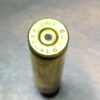Loading 223 with Nosler and Sierra book values (mid range, working up from min to max) and got several what look like pierced primers to me.

Is it the WSR primer or something else (most likely)? I have not seen this is other reloadings with mid range loads, but the AR platform is new to me. And is it best to replace the firing ping after seeing this (new AR).

Is it the WSR primer or something else (most likely)? I have not seen this is other reloadings with mid range loads, but the AR platform is new to me. And is it best to replace the firing ping after seeing this (new AR).



